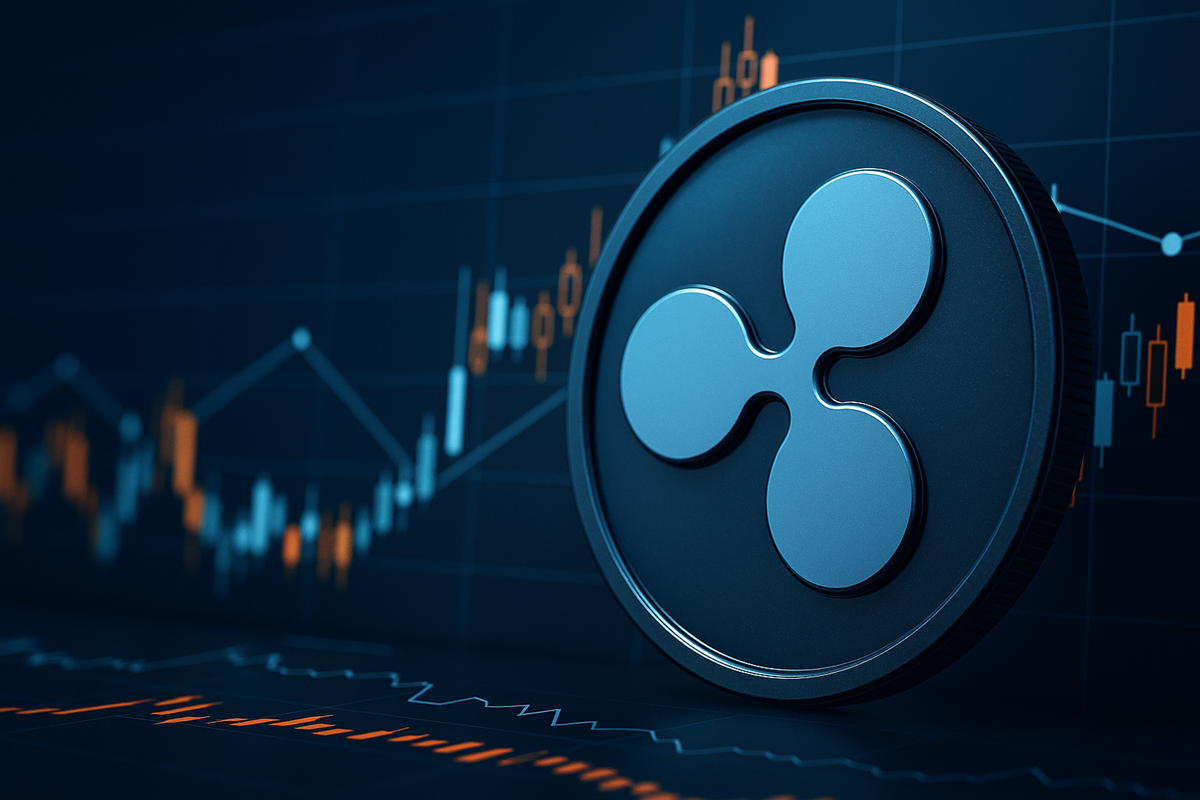CME Group Bets Big On XRP—Institutional Demand Is Surging

CME Group’s quiet confidence in XRP has crystallized into a fully fledged commitment: the derivatives giant now treats the token as a core building-block of its digital-asset strategy. Speaking on the Futures Radio Show podcast, Tim McCourt—Global Head of Equity and FX Products—explained that the simultaneous rollout of full-size and micro futures on May 19 was “in response to clearly articulated customer demand,” a phrase he repeated several times to underscore the depth of institutional interest.
Why XRP?
That demand, McCourt noted, is neither abstract nor speculative. “XRP itself is a top-three coin in market cap and it’s very actively traded in the spot market,” he said, adding: “When we also looked at XRP, it’s a similar story [to Solana] where it has a really strong use case, just a little bit different in terms of their transactions on the XRP Ledger. They settle in 3 to 5 seconds, they’re processing 1,500 transactions per second with minimal fees. So it’s a very tactile, very useful protocol.”
Cash-settled against the CME CF XRP Reference Rate published at 11:00 am ET each day, the micro contract represents 2,500 token, while the standard contract is twenty times larger at 50,000 token. Both are margin-offsettable against CME’s existing Bitcoin and Ether products, a feature McCourt believes will “only increase in value” as cross-asset strategies proliferate. “We’re trying to make it as easy and familiar as possible,” he explained, “such that [traders] can plug and play XRP and Solana futures the same way they’re trading Bitcoin, Ether, micro e-minis, options, all these things.”
The Chicago exchange’s wager on XRP comes as its crypto franchise is scaling at an unprecedented clip. “Q1 2025 was our third record quarter in a row for cryptocurrency volume, effectively done with just Bitcoin and Ether,” McCourt told host Anthony Crudele. CME has already added Solana futures—and options—to the mix, but XRP is the first asset beyond the top two to debut with a dual-size contract structure on day one. “It might be the first time we’ve listed both flavors or both sizes of a contract at the same time,” McCourt acknowledged. “And you’re absolutely right—it really speaks to the wide range of demand for these futures on Solana and XRP.”
Institutional desks appear to be driving the bus. ETFs that hold physical XRP are expected to lean on futures for create-and-redeem cycles, using the contracts as “a key ingredient,” McCourt said, “in some of the synthetic create-redemption processes that are happening to enable the success of the ETF ecosystem.” For market makers, the micro contract offers tighter granularity for inventory management, while proprietary trading firms gain a standardized avenue to express relative-value views between XRP, Bitcoin and Ether without incurring custodial risk.
CME Doubles Down On Crypto
CME’s positioning also reflects a larger philosophical bet: that the next wave of crypto growth will migrate toward regulated, centrally cleared venues. “When we first started talking about [crypto] in 2015, people thought we had sort of no spot at the table,” McCourt recalled. “Tradfi was an insult—which was pretty weird, right, if I’m being honest. But we’ve come a long way.” He noted that CME was recently named the most trusted crypto exchange by Forbes, adding, “Trading at CME is one of the most efficient and certainly the most trusted ways to trade cryptocurrency.”
Regulatory tailwinds have helped. Crudele observed that the Trump administration has taken a distinctly pro-crypto stance, a climate that McCourt believes lowers the hurdle for new entrants. “People are more familiar, they are trading other parts—single stocks, options, ETFs,” he said. “We’re just meeting clients where they’re at in a way that’s more familiar, easy to understand.”
That same impetus lies behind CME’s forthcoming spot-quoted futures, slated for June 30 pending CFTC approval. These contracts will display headline prices that mirror the cash market while preserving the capital efficiency and structure of traditional futures. “You can just say, ‘Hey, the S&P 500’s at X or Bitcoin’s at Y or Ether’s at Z,’” McCourt explained. “You don’t have to sort of understand, is it interest rates or dividends or some other idiosyncratic risk that maybe is impacting the basis right now. I just know I want exposure at this level.”
For XRP, the math is straightforward. A deep spot market, near-instant settlement finality and now a regulated derivatives curve together create what McCourt called “a great use case for both size contracts.”
In the broader narrative of digital-asset maturation, CME’s embrace of XRP marks a shift from binary bets on network effects to a portfolio approach that recognizes multiple protocols can coexist. “I don’t necessarily see it as an either-or choice,” McCourt said. “It could be Solana and XRP, Ether and Bitcoin.” By elevating XRP to that same tier, CME tacitly acknowledges the token’s staying power—regardless of the ideological battles that have long dogged it.
At press time, XRP traded at $2.43.

Featured image created with DALL.E, chart from TradingView.com

Editorial Process for bitcoinist is centered on delivering thoroughly researched, accurate, and unbiased content. We uphold strict sourcing standards, and each page undergoes diligent review by our team of top technology experts and seasoned editors. This process ensures the integrity, relevance, and value of our content for our readers.



